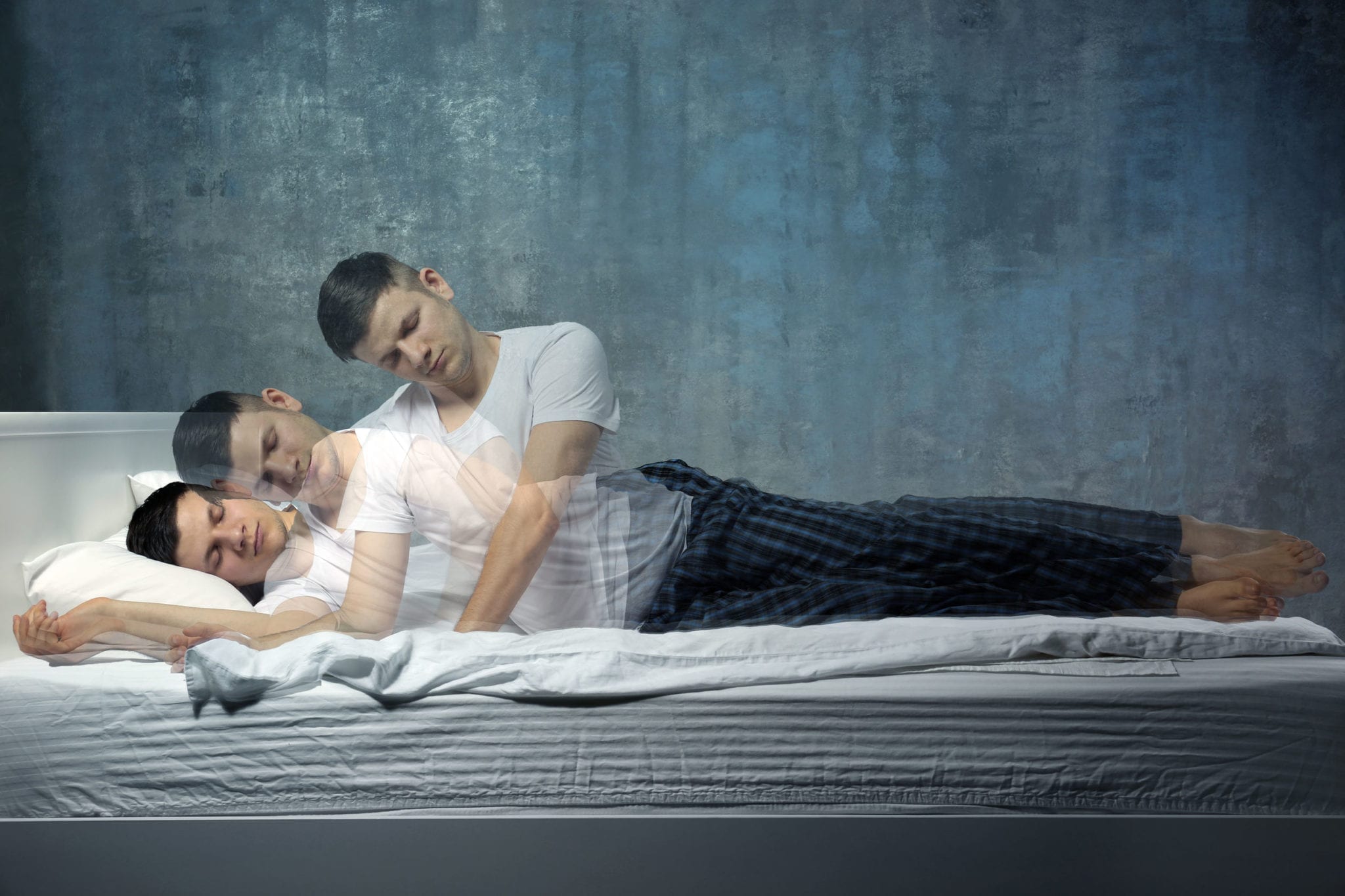
Sleepwalking, also known as somnambulism, is a fascinating phenomenon that has intrigued scientists and researchers for decades. It occurs during the non-rapid eye movement (NREM) sleep phase when sleepers engage in complex activities, such as walking or even driving, while remaining asleep. While sleepwalking is relatively common, affecting approximately 3-4% of adults and 1-17% of children, it remains a mysterious and misunderstood condition.
In this article, we will delve into 19 interesting facts about sleepwalking that will shed light on this nocturnal behavior. From its causes and prevalence to the potential dangers and treatment options, we will explore every aspect of sleepwalking. So, grab a cup of coffee (or maybe a warm glass of milk to help you sleep later) and join us on this informative journey into the mysterious world of sleepwalking.
Key Takeaways:
- Sleepwalking affects 1-15% of people and is more common in children. It can run in families and be triggered by stress, sleep deprivation, and certain medications.
- Sleepwalkers need a safe environment, healthy sleep habits, and support from loved ones. Understanding the facts and implementing prevention strategies can help manage and reduce sleepwalking episodes.
Sleep Walking, Also known as Somnambulism, affects 1-15% of the population.
It is estimated that between 1-15% of people worldwide experience sleepwalking at some point in their lives. This common sleep disorder often occurs during non-rapid eye movement (NREM) sleep and can range from mild episodes to more severe and complex behaviors.
Most sleepwalking incidents occur during childhood.
Children between the ages of 4 and 8 are more prone to sleepwalking, with incidents peaking during these years. However, sleepwalking can persist into adolescence and adulthood for some individuals, though it tends to decrease in frequency as they grow older.
Sleepwalking can run in families.
There is evidence to suggest that sleepwalking can have a genetic component. If one or both parents have a history of sleepwalking, their children are at an increased risk of experiencing it as well. Certain genetic factors may predispose individuals to this sleep disorder.
Stress, sleep deprivation, and certain medications can trigger sleepwalking.
Sleepwalking can be triggered by various factors, including stress, lack of sleep, and the use of certain medications. Additionally, individuals with other sleep disorders such as sleep apnea or restless leg syndrome may be more prone to sleepwalking.
Sleepwalkers may not remember their episodes.
Many sleepwalkers have no recollection of their nighttime wanderings. The sleepwalker’s brain is partially awake but not fully aware of their actions during the episode. This lack of memory is known as sleepwalking amnesia.
Sleepwalking can involve complex behaviors.
While some sleepwalkers may simply walk around their room or house, others may engage in more complex activities such as preparing and eating food, dressing, or even driving. These behaviors can pose a potential danger and require appropriate safety measures.
Affected individuals should maintain a sleep-friendly environment.
Creating a safe environment for sleepwalkers is crucial to prevent injuries. Removing obstacles, keeping doors and windows locked, and installing alarms or gates can help ensure their safety during episodes of sleepwalking.
Sleep deprivation can increase the likelihood of sleepwalking.
Lack of sufficient sleep can trigger sleepwalking episodes. It is important for individuals who experience sleepwalking to prioritize healthy sleep habits and ensure they are getting the recommended amount of sleep for their age.
Alcohol consumption can worsen sleepwalking.
Consuming alcohol before bedtime can increase the likelihood and intensity of sleepwalking episodes. Alcohol disrupts sleep cycles and can lead to more frequent and potentially dangerous sleepwalking behaviors.
Sleepwalking can be diagnosed through a sleep study.
If sleepwalking is a persistent issue, a sleep specialist may recommend a sleep study or polysomnography to monitor brain activity and identify any underlying sleep disorders or contributing factors.
Avoiding sleep deprivation and managing stress can help reduce sleepwalking episodes.
Implementing stress reduction techniques, creating a consistent sleep schedule, and practicing relaxation exercises before bed may help alleviate sleepwalking incidents.
Sleepwalking can be outgrown in adulthood.
Although sleepwalking is more common in children, many individuals naturally outgrow it as they reach adulthood. However, for some, sleepwalking may persist, and seeking professional guidance can be beneficial in managing the condition.
Medication may be prescribed for severe sleepwalking cases.
In severe cases of sleepwalking that pose a risk to the individual’s safety or well-being, doctors may prescribe medication to help regulate sleep cycles and reduce episodes of sleepwalking.
Sleepwalking is more prevalent in individuals with other sleep disorders.
Sleep disorders such as sleep apnea, insomnia, and restless leg syndrome have been found to be common in individuals who also experience sleepwalking. Proper management of underlying sleep conditions is important in reducing sleepwalking episodes.
Environmental factors can play a role in sleepwalking.
Extreme temperatures, noise, and unfamiliar sleeping environments can increase the likelihood of sleepwalking episodes. Keeping the bedroom cool, quiet, and comfortable can potentially decrease the frequency of sleepwalking.
Sleepwalking can be a side effect of certain medications.
Some medications, such as sedatives and certain antidepressants, have been associated with an increased risk of sleepwalking. It is important to discuss any concerns with a healthcare professional and consider alternative medications if necessary.
Sleepwalking can result in injuries.
Due to the disoriented state of sleepwalkers during episodes, injuries can occur. It is essential to take preventive measures to minimize potential risks and ensure the safety of sleepwalkers.
Sleep deprivation can impact overall health and well-being.
Chronic sleep deprivation resulting from frequent sleepwalking can have negative effects on a person’s mental and physical health. Establishing healthy sleep habits and seeking appropriate treatment can help improve overall well-being.
Support and understanding from loved ones are important for sleepwalkers.
Individuals who sleepwalk can benefit from the support and understanding of their family and friends. Creating a caring and safe environment and encouraging them to seek professional help if needed can make a positive difference in their lives.
Conclusion
Sleepwalking, also known as somnambulism, is a fascinating and somewhat mysterious phenomenon. While it may seem like a peculiar behavior to witness, it is estimated that up to 15% of the population has sleepwalked at some point in their lives. This sleep disorder typically occurs during the deep stages of sleep and can vary in intensity, from simple actions like sitting up in bed to more complex behaviors like walking around the house or even leaving it.
Although sleepwalking is generally harmless, it can lead to potential risks and disturbances in a person’s daily life. Understanding the facts and causes behind sleepwalking can help shed light on this peculiar behavior and pave the way for further research and treatment options. By delving into the 19 interesting facts about sleepwalking, we have gained insight into the prevalence, triggers, and peculiarities surrounding this sleep disorder. Whether you or someone you know has experienced sleepwalking, these facts can help demystify this curious phenomenon.
FAQs
1. What is sleepwalking?
Sleepwalking, or somnambulism, is a sleep disorder characterized by complex movements or behaviors during deep sleep. It typically occurs in the first few hours of sleep and can range from simple actions to more elaborate behaviors.
2. What causes sleepwalking?
The exact cause of sleepwalking is unknown, but it is believed to be associated with a combination of genetic, environmental, and physiological factors. Sleep deprivation, stress, certain medications, and underlying sleep disorders can also contribute to sleepwalking episodes.
3. Can sleepwalking be dangerous?
In most cases, sleepwalking is harmless. However, there is a potential for injuries during episodes, especially if the sleepwalker encounters obstacles or leaves the safety of their home. It is important to create a safe sleep environment for those who experience sleepwalking.
4. Can sleepwalking be treated?
Treatment for sleepwalking depends on the underlying cause and severity of the episodes. In some cases, addressing underlying sleep disorders or making lifestyle changes may help reduce the frequency of sleepwalking. In severe cases, medication or therapy may be recommended by a healthcare professional.
5. Is sleepwalking common in children?
Yes, sleepwalking is more common in children, particularly between the ages of 4 and 8. Most children outgrow sleepwalking as they reach adolescence, but it can persist into adulthood in some cases.
6. Can sleepwalking be triggered by alcohol or drugs?
Yes, alcohol consumption and certain drugs can increase the likelihood of sleepwalking episodes. These substances can disrupt the normal sleep cycle and increase the chances of engaging in sleepwalking behaviors.
7. Should I wake a sleepwalker?
It is generally advised not to wake a sleepwalker abruptly as it can startle or disorient them. Instead, gently guide them back to bed and ensure their safety. However, if the sleepwalker is in immediate danger or showing signs of distress, it may be necessary to wake them.
8. Can sleepwalking be inherited?
There is evidence to suggest that there is a genetic component to sleepwalking. People with a family history of sleepwalking are more likely to experience episodes themselves. However, the specific genes involved are still being researched.
These frequently asked questions provide a brief overview of sleepwalking, addressing common concerns and shedding light on this intriguing phenomenon. If you have further questions or concerns about sleepwalking, it is always best to consult with a healthcare professional or sleep specialist to receive personalized guidance and treatment options.
Was this page helpful?
Our commitment to delivering trustworthy and engaging content is at the heart of what we do. Each fact on our site is contributed by real users like you, bringing a wealth of diverse insights and information. To ensure the highest standards of accuracy and reliability, our dedicated editors meticulously review each submission. This process guarantees that the facts we share are not only fascinating but also credible. Trust in our commitment to quality and authenticity as you explore and learn with us.


